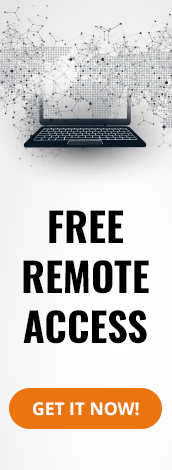What is Scheduler daemon.exe?
Originally developed by Tenebril, Inc., Scheduler daemon.exe is a legitimate file process. This process is known as Scheduler Daemon and it belongs to SpyCatcher Express. It is located in C:\Program Files by default.
Scheduler daemon.exe virus is created when malware authors write virus files and name them after Scheduler daemon.exe with an aim to spread virus on the internet.
Affected Platform: Windows OS
How to check if your computer is infected with Scheduler daemon.exe malware?
If your system is affected by Scheduler daemon.exe malware, you will notice one or several of the symptoms below:
- Scheduler daemon.exe occupies an unusually large CPU memory
- Erratic internet connection
- Your browser is bombarded with annoying popup ads
- Computer screen freezes
- PC's processing speed suffers
- You are redirected to unknown websites
To pinpoint the virus file location, take the following steps:
Step 1: Press CTRL+ALT+DEL keys at once to open Task Manager.
Step 2: If you notice the file located outside C:\Program Files, you should run an antivirus scan to get rid of the malware.
How to remove Scheduler daemon.exe malware from system using Comodo Cleaning Essentials?
You can either choose to remove Scheduler daemon.exe and other malwares using Comodo Antivirus, or Comodo Cleaning Essentials (CCE) – both of which are absolutely free to download! CCE is a set of computer security tools designed to help you identify and remove malwares and unsafe processes from an infected computer.
To remove malwares using CCE, take the following steps:
1. Check the system requirements and download the feature-rich CCE suite for free.
2. After installation, choose the type of scan you want to perform. CCE offers 3 scan options to get rid of malwares from a PC:
- Smart Scan: Does a scan on critical areas of your system.
- Full Scan: Does a complete scan of your system.
- Custom Scan: Does a scan only on selected items.
The process to initiate the above mentioned scans are self-explanatory and thus, easy-to-use.
Additionally, it's recommended that you approve of any updates that the CCE will prompt you about to ensure it does a better job of identifying all the latest threats.
3. Click 'Next' to view the results.
Regardless of the type of scan you choose, the results will sometimes show false positive (flagging files that are actually safe), which has to be ignored. Only select the files you want to get rid of.
4. Click 'Apply' to apply the selected operations to the threats. The selected operations will be applied.
| No. | Company | File Type | SHA1 | MD5 | Malware Name |
Digitally Signed |
File Version |
Product Version |
Submitted From |
Malware Behavior |
|---|
- 4 items per page
- 8 items per page
- 16 items per page
- 32 items per page
| No. | Company | File Type | SHA1 | MD5 | Digitally Signed |
File Version |
Product Version |
Submitted From |
|---|---|---|---|---|---|---|---|---|
| 1 | N/A | Executable | 01682e429ecc9f85 ea247883349c8536 ff4fc8e9 |
6718f3c43fbd39d3 51a855341f8e096e |
No | N/A | N/A |  Internal Submission Internal Submission |
- 4 items per page
- 8 items per page
- 16 items per page
- 32 items per page








